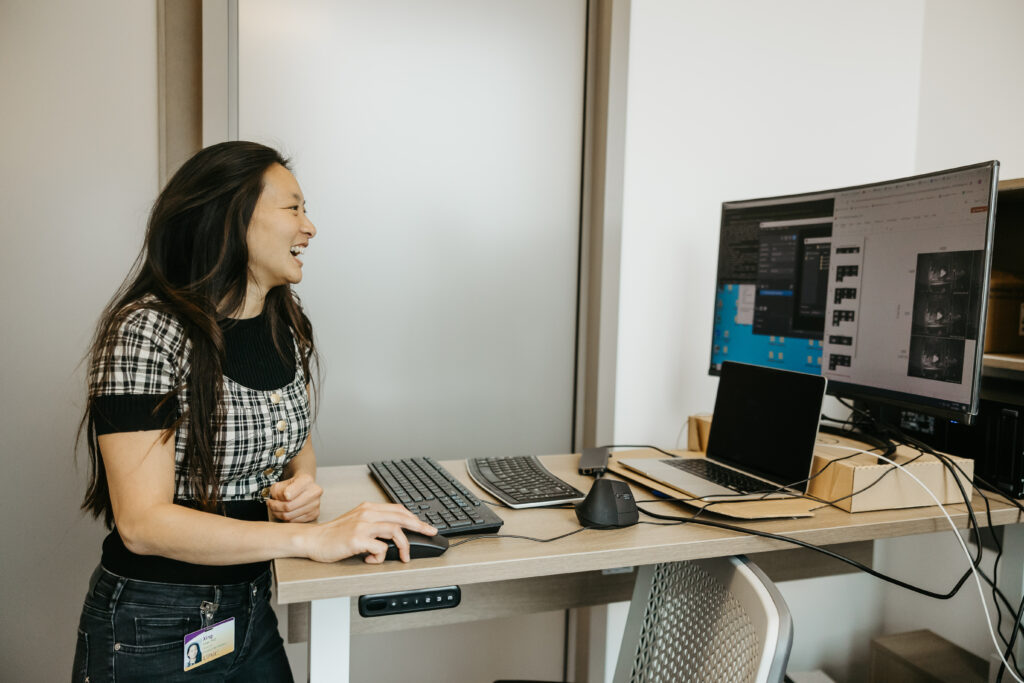Xing Chen, PhD, Assistant Professor of Ophthalmology, has received a National Institutes of Health (NIH) New Innovator Award from the NIH Common Fund’s High-Risk, High-Reward Research Program, with $1.5 million over five years. The program supports exceptionally creative scientists pursuing highly innovative research with the potential for broad impact in biomedical, behavioral, or social sciences within the NIH mission.
Dr. Chen explained her project: “Electrical stimulation of visual areas in the brain generates the perception of dots of light (phosphenes), even after decades of blindness. Clinical brain-computer interfaces offer a possible approach for restoring vision in blind individuals with extensive damage to the eye and/or optic nerve, bypassing the retina.
Ideally, stimulation on a given number of electrodes would elicit an equivalent number of discrete phosphenes, where the location and duration of each phosphene are predictable and controllable, forming an image akin to the letters on a matrix-board along the highway.
However, previous studies show that simultaneous stimulation on multiple electrodes often evokes a single, merged phosphene at an unpredictable location (phosphene fusion). Thus, in this project, we will study how perceptual experience is shaped by specific patterns of electrical stimulation. Our findings will enhance the quality of phosphene vision, ultimately assisting future blind patients with daily tasks such as navigation and object recognition.”
The project will involve combining the latest computational and machine learning techniques with behavioral and neuronal recording in non-human primates to develop rigorous, data-driven models that accurately predict the perceptual experience evoked by a wide variety of spatiotemporal patterns of stimulation.
Dr. Chen will also record electrophysiology data from a large area of the monkey visual cortex bilaterally, via 1024 intracortical Utah-array electrodes simultaneously, during microstimulation on multiple electrodes. This will elicit phosphenes across the large areas of the visual field, spanning foveal to peripheral regions. As she explained, “Electrical stimulation of the visual system gives rise to artificial vision in both blind and sighted subjects. Our sighted animals will be trained to perform phosphene localization and match-to-sample tasks, providing behavioral reports of phosphene characteristics and the occurrence of phosphene fusion.”
They will use their neuronal recordings and behavioral reports to develop and validate a detailed, biologically realistic model of current interactions, neuronal activity, and perception during microstimulation on multiple electrodes. “As a result, we will understand and predict how the distance between electrodes in the cortex, the time interval between stimulation trains, and the stimulation of different visual areas (V1 and V4) give rise to distinct versus fused phosphenes, laying a crucial foundation for the generation of reliably interpretable phosphene images,” Dr. Chen said.
